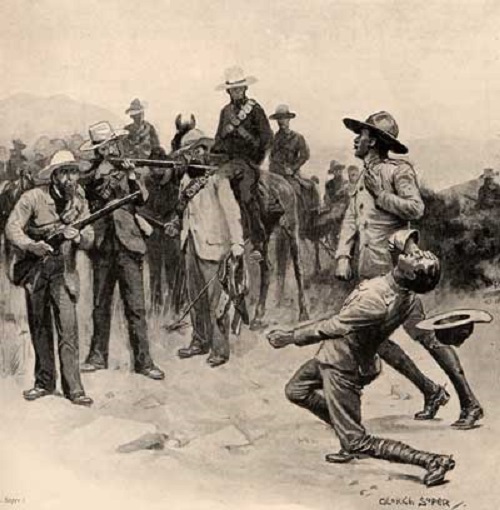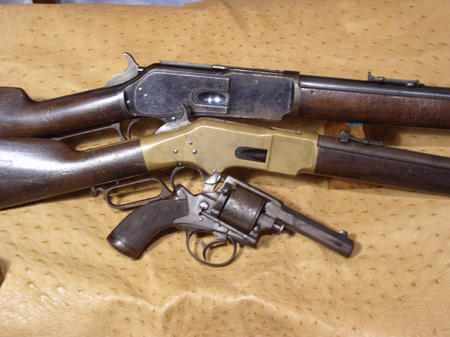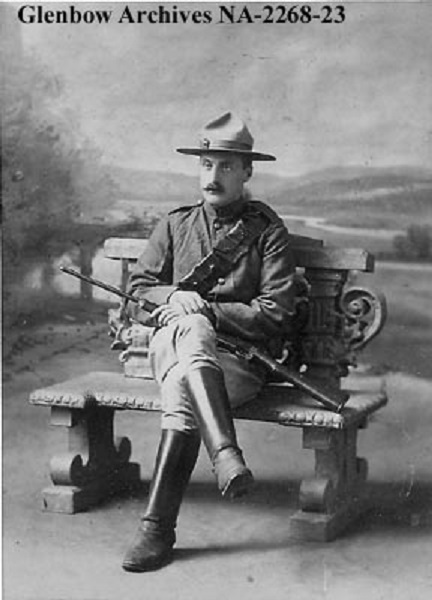January 18, 2016
 Offline
OfflineI recently purchased a Model 1873 full-length rifle at an auction in the UK. It’s serial number corresponds with an 1897 manufacture date. It’s in 44 calibre and appears to be all original. It has two intriguing sets of stamps:
1. Across the top barrel flat (octagonal barrel) is the Broad Arrow enclosed in a “U” in two places. These correspond to military ordnance acceptance markings from the Cape Colony Government.
2. On the right-side barrel flat about two inches in front of the receiver “BESL” is deeply stampted. I have searched South African military records and can’t find any military, militia, police or paramilitary group corresponding to those initials, including from Bechuanaland: the only abbreviation that appears to correspond is “British Empire Service League,” which was the predecessor to the current South African Legion.
I am interested in trying to find out more about this and other Winchester rifles in South African military service. As a Canadian, I am wondering if there is a linkage between the presence of Winchester lever action rifles and the Canadian Mounted Rifles who served in the Second Boer War (1899-1902), as many of these men were former frontiersmen and Northwest Mounted Police officers who would have been familiar with them and possibly who favoured such rifles. Officers in the first contingent were permitted “private purchase” side arms, so some of these firearms may have remained behind or have been captured by the Boers.
Another question that arises is whether there was a London receiving house distributing Winchester firearms around the turn of the Century. I have no idea why a firearm would have wound up in Legion hands.
December 30, 2011
 Offline
OfflineThere’s an article about a Model 1876 in South Africa in the Winter 2012 WACA Collector. You might try reading through that back issue on this website for some leads if you haven’t already?
https://winchestercollector.org/magazine/page/2/
Brad
January 18, 2016
 Offline
Offline–Thanks for the information, and I’ll certainly review all the back-issues.
I am particularly interested in this gun because of my interest in a famous Canadian Officer who served during the Boer War:
Major A.L. “Gat” Howard was an intrepid and colourful member of the First Contingent of Canadian Mounted Rifles who arrived in South Africa in 1899. His background was very interesting, as he was originally American. He was a Union Army Officer who went on to become Colt’s Gatling Gun foreign sales representative. He accompanied the NW Field Force during the 1885 Rebellion, where he demonstrated the Gatling Gun to the Canadian Militia in winter conditions. Afterwards, he remained in Canada, eventually becoming a commissioned Army officer. He continued to have a great interest in the use of machine guns. During operations between 1899 and 1901 he rose to the rank of Major, eventually becoming the C/O of the Canadian Scouts (later the Royal Canadian Dragoons). While on a recce mission, he and his CSM were ambushed and captured by the Boers, who apparently executed them after discovering their identities as amongst those who had caused them so much grief. It would be no surprise if an officer like Howard would favour American personal arms, as many in the First Contingent privately purchased their own. It would also be no surprise if the Boers would have captured the weapons, only to have them eventually fall into the hands of the Cape Government.
December 30, 2011
 Offline
OfflineGunner
The South African Winchesters and Major Howard could be interesting subject material for The Winchester Collector magazine. Maybe consider writing an article for it someday. You can email me at [email protected] or also Rob at [email protected] if you are interested.
Thanks,
Brad
January 18, 2016
 Offline
OfflineI certainly agree. Colt exported something like 4000 1878 Double-Action Frontier handguns in 44-40, a large percentage to “Africa,” so I would expect the same would be true for Winchester. Having a rifle and handgun in the same calibre would have been appealing, even though this cartridge had limited use against more than medium game. A similar Winchester 1873 was carried by Henry Morton Stanley on his epic search for David Livingstone, and was recently auctioned–off by Holts. Stanley recounted that the Winchester saved his party from hostile natives on a number of occasions, where it was appreciated for it’s rate of fire, which gave the impression of multiple rifles shooting.
January 18, 2016
 Offline
Offline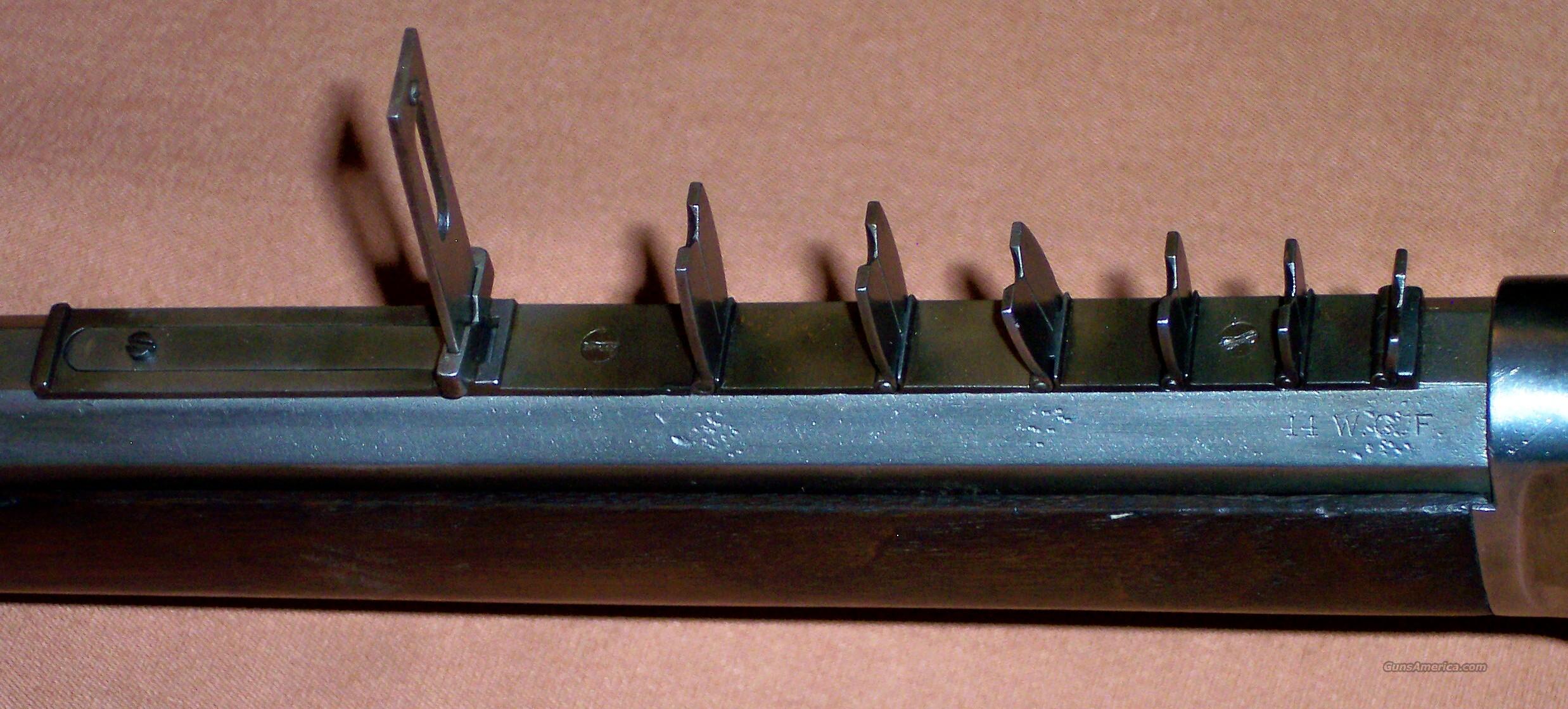

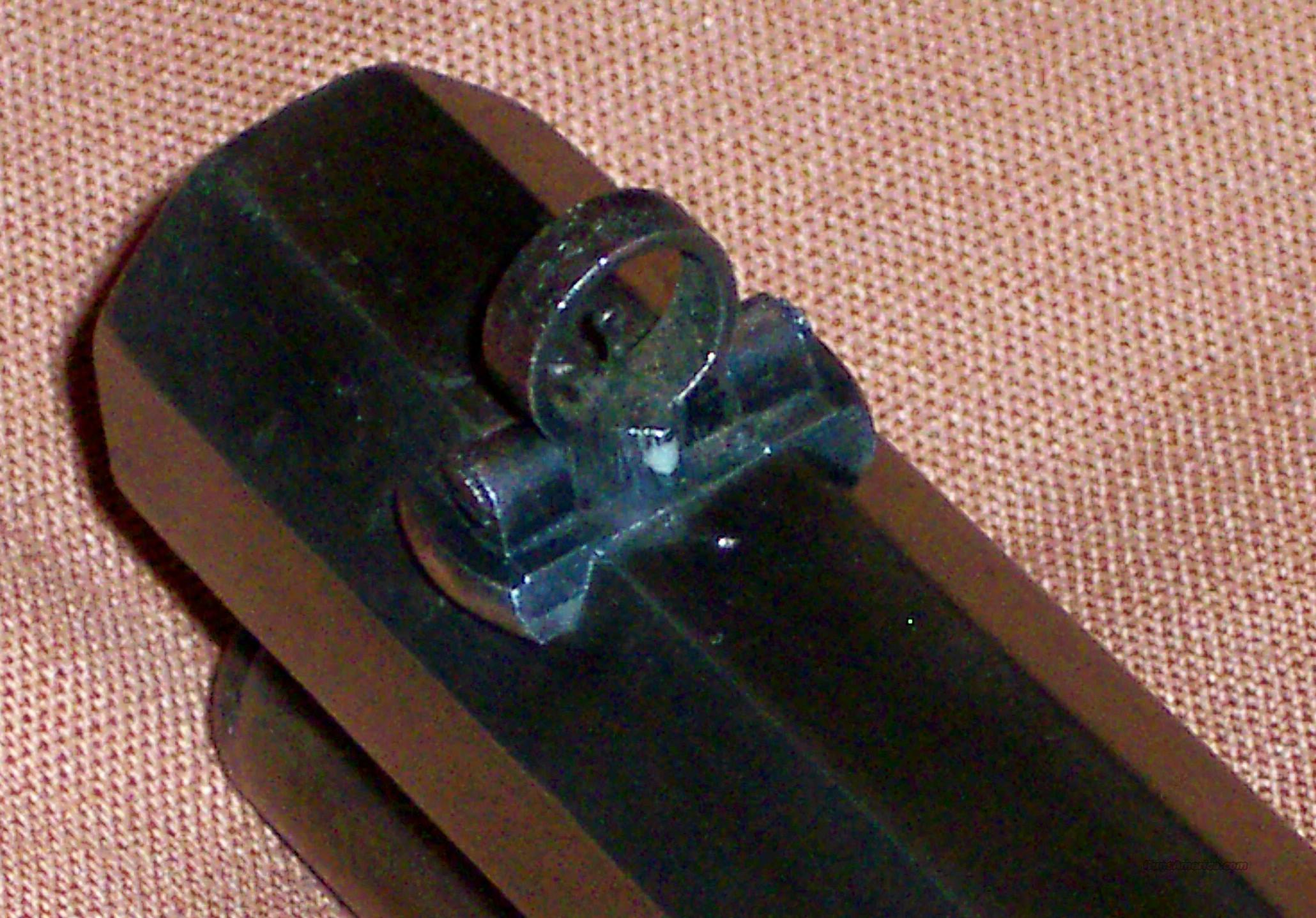

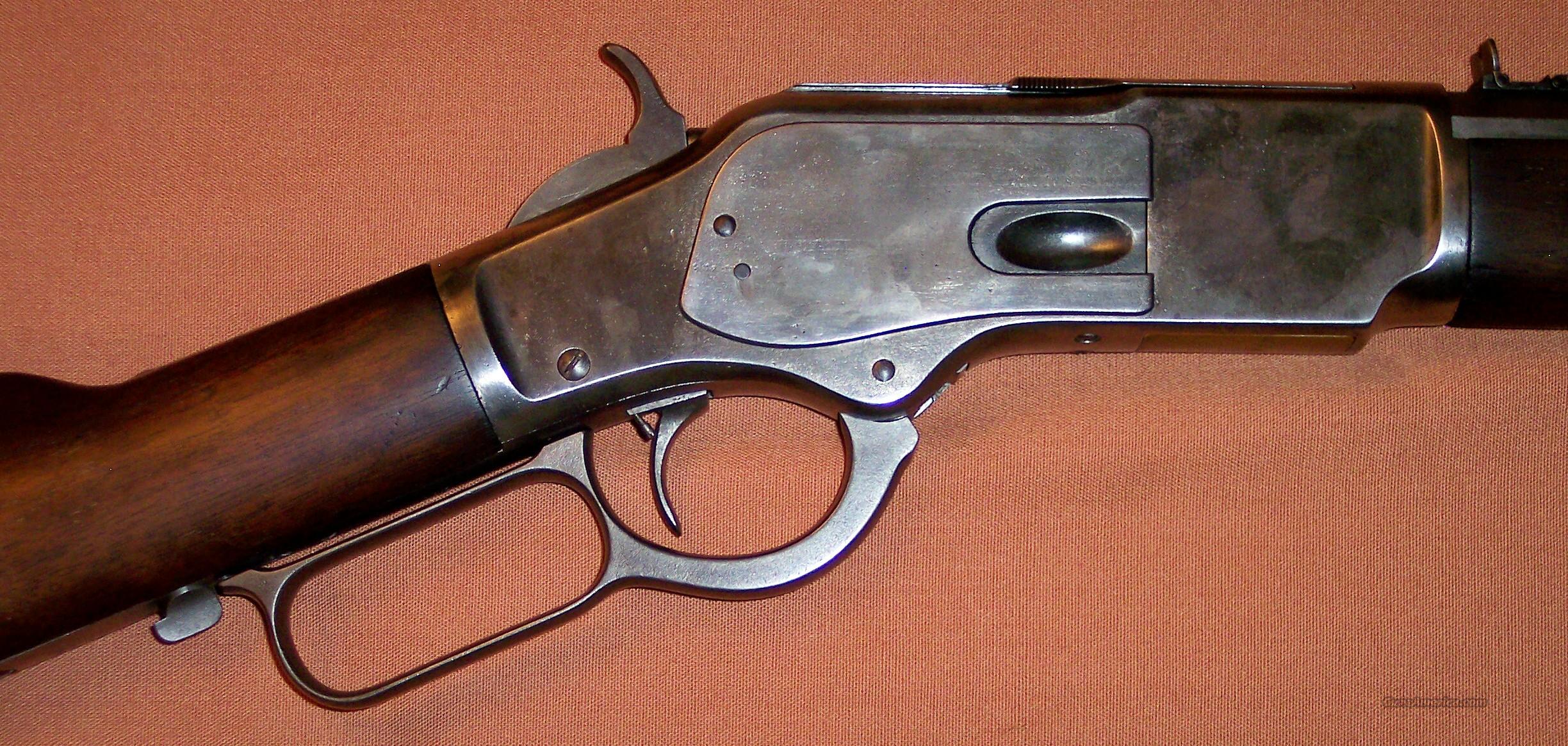

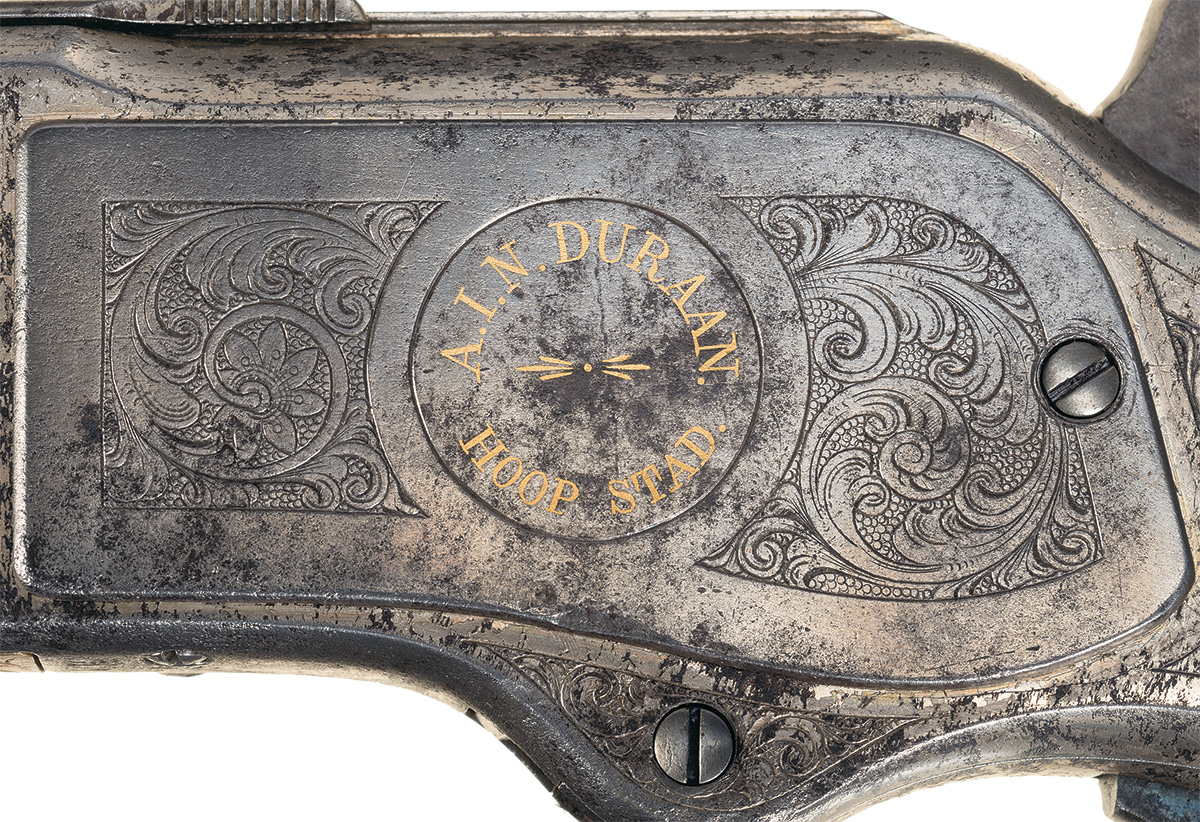

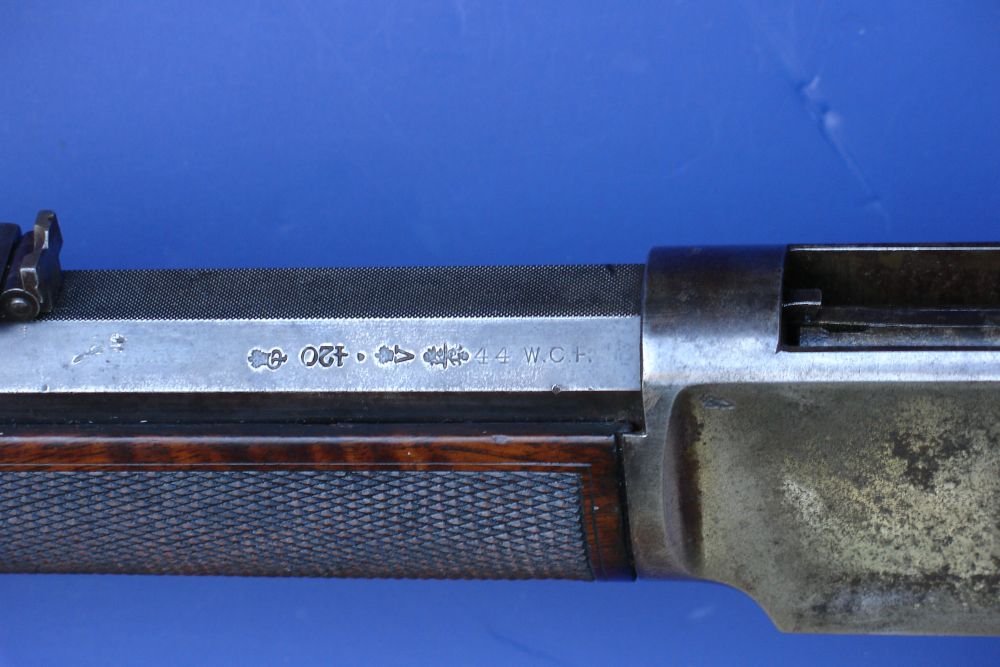

There are three ways that Winchester rifles entered Southern Africa prior to the outset of the Anglo-Boer War. Winchester exported sporting rifles with custom features to discriminating buyers either directly through local gun dealers or indirectly through their London Agents. English guns bore British Proof marks stamped on their barrels. Some of these guns were used by the Boers against Empire Forces or by Loyalists against the Boers. The British Naval Blockade ended the importation of American or European firearms at the outset of hostilities. The rifles above represent the now rare “Seven-Leaf” M1873 Sporting Rifle.
January 18, 2016
 Offline
OfflineIn the period from 1880 to about 1895 there were many adventurers importing foreign-made firearms when they arrived equipped from their own countries. Henry Morton Stanley is perhaps the most famous. One of his Winchesters was recently auctioned-off in the UK; he attributes the survival of his expedition to find the lost David Livingstone to the firepower of his Winchester rifles, which ended a number of hostile attacks by local African tribesmen. Frederick Burnham was another prominent American adventurer who added to his fame as an Indian Scout with his adventures in Rhodesia. The Boers were inflamed by the influx of “Rooineks” (red-necks, or settlers) during the Transvaal diamond rush of the 1880s.
Pictured above are Stanley’s M1866 in .44 Rimfire and his M1876 in 45-75.
January 18, 2016
 Offline
OfflineAlthough there is a paucity of written information, there is photographic evidence that a number of Colonial as well as Imperial Officers brought personal side-arms along with them during their service from 1899 until 1902. Some of these weapons may have been left behind after capture by the Boers, loss on the battlefield or as gifts to locals when their owners departed home.
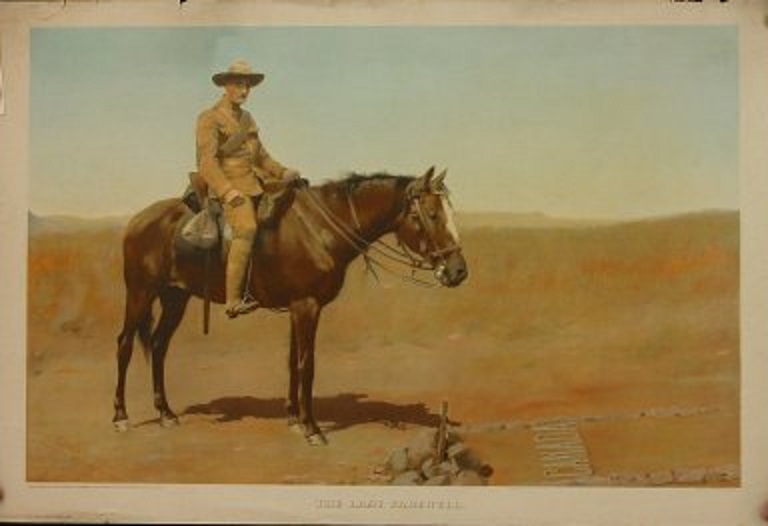

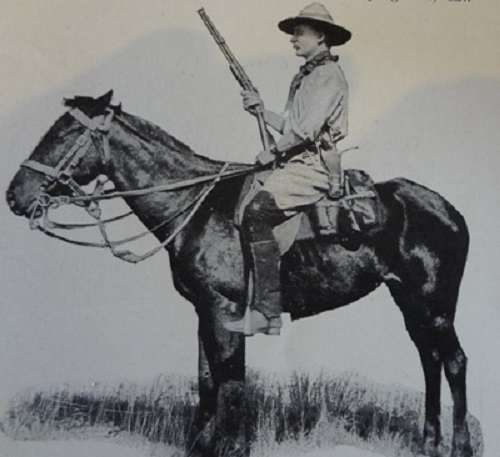

December 30, 2011
 Offline
OfflineThis is really neat stuff Gunner. Good luck with your continued research on the subject. Maybe some of the forum users here will have some leads for you too.
Thanks,
Brad
June 11, 2018
 Offline
OfflineGunner have a look here:
https://winchestercollector.org/forum/winchester-rifles/boer-war-south-african-winchesters/
1 Guest(s)


 Log In
Log In




